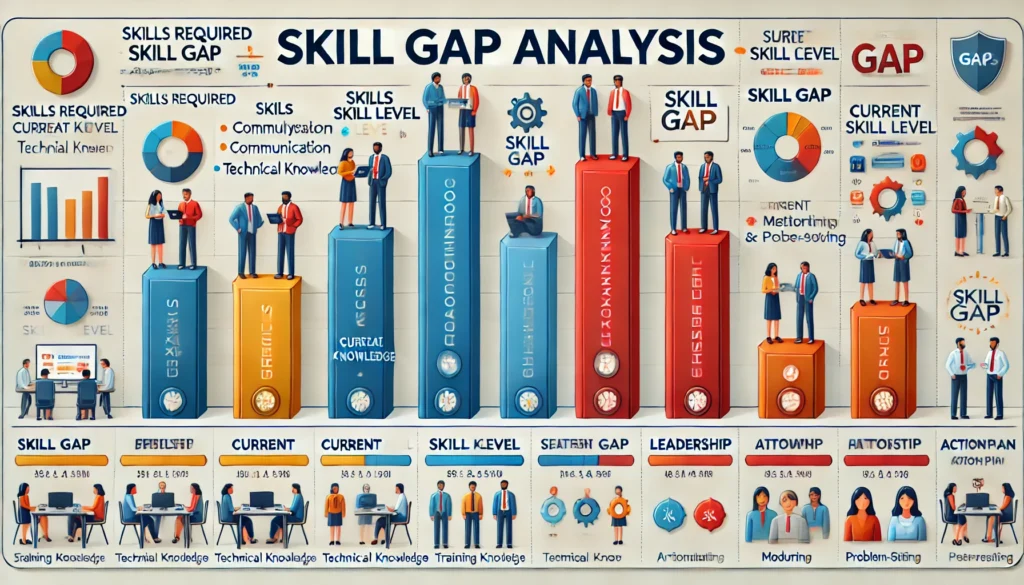Onboarding Analytics: Key Metrics for Assessing Effectiveness in Reducing Time-to-Productivity

Introduction to Onboarding Analytics
Onboarding analytics is an emerging discipline within human resources that focuses on using data-driven insights to enhance the onboarding experience for new employees. In an era where organizations strive for maximum efficiency and employee satisfaction, the importance of onboarding analytics cannot be overstated. By leveraging data, organizations can better understand their onboarding processes, identifying what works well and what areas require improvement to minimize time-to-productivity.
Effective onboarding is crucial for new hires as it sets the foundation for their success within the organization. Comprehensive onboarding analytics helps in evaluating key metrics such as the duration of the onboarding phase, completion rates of training modules, and overall employee satisfaction. Through the careful analysis of these metrics, HR professionals can pinpoint obstacles that hinder the productivity of new employees. For instance, if data indicates that new hires take longer to complete specific training programs, adjustments can be made to the curriculum or additional support can be provided to facilitate a smoother transition.
In addition to improving individual onboarding experiences, these analytics provide organizations with a broader perspective on their talent management strategies. By examining trends and patterns, HR departments can assess the effectiveness of different onboarding practices across various departments or job roles. This ensures that best practices are scaled organization-wide, leading to improved productivity rates and enhanced employee engagement from the outset.
The integration of onboarding analytics into HR practices not only accelerates the time it takes for new hires to become productive but also contributes to a more informed approach in talent acquisition and retention. Ultimately, a data-driven onboarding process is vital for creating a workforce that is both efficient and satisfied, aligning personal goals with organizational objectives.
Understanding Time-to-Productivity
Time-to-productivity refers to the duration required for a new employee to reach a level of performance that meets or exceeds expectations within their role. This metric serves as a crucial benchmark in the onboarding process, enabling organizations to evaluate how effectively they equip new hires with the necessary skills, knowledge, and resources. The significance of time-to-productivity lies in its direct correlation with overall employee performance, retention rates, and operational costs.
When organizations focus on reducing time-to-productivity, they not only enhance new employee integration but also foster a positive workplace culture. A streamlined onboarding experience that minimizes time-to-productivity can result in higher retention rates. Employees who feel adequately prepared in their roles are more likely to engage with their work and remain with the organization for an extended period. Conversely, prolonged onboarding can lead to frustration and increased turnover, ultimately affecting morale and contributing to higher recruitment costs.
Moreover, the impact of reducing time-to-productivity goes beyond individual employees. It can lead to increased overall workforce efficiency, as new hires who ramp up quickly are able to contribute to team goals and projects sooner. This efficiency can translate into significant cost savings for businesses, considering that prolonged onboarding processes may hinder productivity and delay project timelines.
Enhanced employee satisfaction is another crucial outcome stemming from improved time-to-productivity. When employees receive effective onboarding that swiftly prepares them for their roles, they tend to experience higher levels of job satisfaction. This contentment further cultivates a positive work environment where employees feel valued and supported by their organization. Consequently, focusing on minimizing time-to-productivity not only boosts individual performance but also enhances the overall well-being and functionality of the workplace.
Key Metrics for Onboarding Effectiveness
Onboarding effectiveness significantly influences an organization’s ability to integrate new employees into the workplace efficiently. Several key metrics serve as vital tools for measuring this effectiveness, assisting human resource departments and management in optimizing the onboarding process. Among these metrics, the new hire retention rate stands out. This metric reflects the percentage of new hires who remain with the company after a specified period. A high retention rate indicates that the onboarding process effectively fosters commitment and satisfaction among employees.
Onboarding satisfaction scores represent another relevant measure. These scores are typically gathered through surveys administered to new employees following their onboarding experience. Surveying new hires provides valuable insights into their perceptions of the onboarding process, highlighting areas needing improvement. The insights gained can enhance the onboarding materials and methods, ultimately refining the overall experience for future new hires.
Productivity benchmarks, defined as the performance standards set for new employees, act as crucial indicators of onboarding success. By comparing the productivity levels of new hires against established benchmarks, organizations can assess how well the onboarding process equips them with the necessary skills and knowledge. Additionally, tracking training completion rates— the percentage of onboarding modules that new hires complete— offers insights into the efficacy of training materials and the overall structure of the onboarding program.
Finally, engagement levels during the onboarding period can be a compelling indicator of effectiveness. Monitoring participation in onboarding activities and assessing interactions with teams can illuminate how well-integrated new hires feel within the organization. By evaluating these central metrics, companies can develop a comprehensive understanding of their onboarding effectiveness and implement targeted improvements that lead to better outcomes.
New Hire Retention Rate
The new hire retention rate serves as a pivotal metric in evaluating the effectiveness of onboarding programs within organizations. This key performance indicator measures the percentage of new employees who remain with the company after a specified period, typically assessed at intervals of 30, 60, or 90 days, and continuing into the first year. A high retention rate suggests that the onboarding process is successful in integrating new hires and making them feel valued, while a low retention rate may indicate areas for improvement.
To properly interpret the new hire retention rate, it is critical to analyze the data in conjunction with other onboarding metrics, such as employee engagement levels, feedback scores, and even productivity measurements. For instance, if the retention rate is below organizational expectations, it may be beneficial to explore the root causes, such as mismatches in role expectations, ineffective training programs, or a lack of support from managers and peers. By focusing on these factors, organizations can make necessary adjustments to their onboarding strategies to foster a more conducive work environment.
Moreover, calculating the retention rate requires a straightforward formula: divide the number of employees who remain with the company after the specified period by the total number of employees who were onboarded, then multiply the result by 100 to obtain the percentage. Tracking this metric over time allows organizations to identify trends and measure improvements related to changes made in the onboarding process. Regularly assessing the new hire retention rate helps organizations maintain a healthy workforce and minimize turnover costs, thereby enhancing overall productivity and morale.
In conclusion, focusing on the new hire retention rate not only reflects the success of the onboarding experience but also provides valuable insights for continuous improvement, enabling companies to create a more inviting atmosphere for new employees.
Onboarding Satisfaction Scores
An essential component of an effective onboarding process is the collection and analysis of onboarding satisfaction scores from new hires. These scores serve as key indicators of how well new employees perceive their onboarding experience and can influence their overall job satisfaction and productivity. Gathering feedback through various methods, such as surveys and interviews, provides an opportunity to understand the nuances of the onboarding journey.
Surveys are a popular method for collecting onboarding satisfaction scores. By utilizing online platforms, organizations can easily distribute surveys to new hires shortly after the onboarding process concludes. These surveys typically include a range of questions designed to measure various aspects of the onboarding experience, such as the clarity of training materials, the support received from managers and peers, and the ease of transitioning into the new role. Questions can employ a Likert scale to quantify responses, allowing for straightforward analysis of satisfaction levels.
Alternatively, conducting interviews provides a more in-depth understanding of new hires’ experiences. One-on-one discussions can reveal insights that standardized surveys might overlook. These interviews can be structured or semi-structured, allowing for flexibility in conversation while ensuring that crucial topics are addressed. New hires can share their perspectives on what worked well and what could be improved, generating valuable feedback for refining onboarding processes.
Utilizing the feedback gathered through surveys and interviews can significantly enhance the onboarding experience. Analysis of the onboarding satisfaction scores allows organizations to identify strengths and weaknesses, tailoring their initiatives to address areas needing improvement. By continually refining the onboarding process based on new hire feedback, companies can ultimately create a more supportive and effective environment, thereby reducing time-to-productivity and fostering employee retention.
Examples of Companies Utilizing Analytics for Onboarding Optimization
Several companies across various industries have successfully implemented onboarding analytics to better their onboarding processes, demonstrating the tangible benefits of data-driven decision-making. A notable example is Google, which has utilized onboarding metrics to enhance the employee experience. The company measures the time it takes for new hires to complete training modules and engages with employees through surveys to gather feedback on the onboarding process. By analyzing this data, Google identified areas of improvement and streamlined their onboarding program, ultimately reducing the time to productivity for new employees.
Another prominent case is that of Accenture, which adopted onboarding analytics to foster a more efficient assimilation of new hires into their workplace culture. The consulting firm conducted detailed assessments on the engagement levels of new employees during their first month. By correlating engagement data with performance metrics, Accenture discovered that employees who interacted with assigned mentors and participated in team-building activities showed significant improvements in their productivity. This insight allowed them to tailor the onboarding program to ensure new employees received the necessary support and resources, enhancing overall job satisfaction and retention rates.
Similarly, the tech company Buffer employs data analytics to evaluate the effectiveness of their onboarding journey. Buffer tracks key metrics, such as completion rates for onboarding tasks and time taken to complete each phase of the onboarding process. By evaluating this data, they identified bottlenecks where new hires struggled. As a result, Buffer refined their onboarding materials and instituted a more personalized onboarding experience, resulting in shorter time frames for new hires to become fully integrated and productive within their teams. These companies exemplify how leveraging onboarding analytics can lead to strategic improvements, ultimately benefiting both employees and the organization at large.
Leading Onboarding Tools and HRMS
In the landscape of onboarding analytics, several tools and Human Resource Management Systems (HRMS) have emerged as market leaders, significantly enhancing the onboarding process and supporting analytics. These platforms provide vital functionalities that streamline various stages of onboarding while also gathering data to assess the effectiveness of these processes. Among these, BambooHR, Workday, and Zenefits stand out due to their comprehensive features designed to improve time-to-productivity metrics.
BambooHR is a widely recognized HRMS that offers a user-friendly interface for managing employee onboarding. The platform includes features such as electronic document signing, customizable onboarding checklists, and robust reporting tools that allow HR professionals to analyze the onboarding experience. By facilitating a seamless transition for new hires, BambooHR supports organizations in reducing the time it takes for employees to become fully productive.
Workday is another influential tool in the onboarding realm. Known for its powerful analytics capabilities, Workday provides deep insights into onboarding practices through its data-driven approach. It allows organizations to track metrics such as time-to-fill roles and new hire performance, which can be crucial for assessing onboarding effectiveness. The integration of ongoing training and development modules can further aid employers in enhancing their onboarding strategies.
Zenefits distinguishes itself by offering a comprehensive suite of HR tools that includes onboarding solutions. The platform automates many onboarding tasks, such as document collection and benefits enrollment, thus minimizing administrative burdens. Zenefits’ built-in analytics tools enable HR teams to measure the impact of their onboarding processes and make data-informed decisions aimed at improving employee engagement and effectiveness.
Collectively, these onboarding tools and HRMS contribute significantly to organizations striving to optimize their onboarding practices, ultimately creating more efficient pathways for new hires to achieve productivity.
Challenges and Considerations in Onboarding Analytics
Implementing onboarding analytics can present a variety of challenges that organizations must navigate to ensure successful integration and measurement of effectiveness. One of the most pressing issues is data privacy. Organizations are increasingly scrutinized over how they collect, store, and utilize personal information. The onboarding process often involves gathering sensitive data about new employees, and companies must adhere to stringent data protection regulations, such as the General Data Protection Regulation (GDPR) in Europe or the California Consumer Privacy Act (CCPA) in the United States. Failure to align onboarding analytics practices with these regulations can lead to significant legal repercussions and damage to a company’s reputation.
Another challenge lies in the need for cultural change within organizations. Many companies have established traditional methods for onboarding, which may be resistant to adaptation. Shifting towards a data-driven approach requires not only the adoption of new tools and metrics but also a change in mindset among leadership and staff. Employees may need to be trained to understand the value of analytics in onboarding and how it contributes to their roles and the overall success of the organization. Without buy-in from all levels, implementing onboarding analytics can encounter resistance and ultimately fail to deliver its intended benefits.
Finally, aligning onboarding metrics with overarching business goals is critical but often overlooked. Organizations need to ensure that the metrics they track are not only relevant to onboarding processes but also contribute to broader objectives such as employee retention, productivity, and organizational growth. This requires a strategic approach to define key performance indicators (KPIs) that are meaningful and actionable. Metrics should be regularly reviewed and adapted to reflect changes in the business environment and employee needs. Inadequate alignment can lead to ineffective monitoring and analysis, thereby diminishing the potential of onboarding analytics to enhance time-to-productivity successfully.
Future Trends in Onboarding Analytics
The landscape of onboarding analytics is rapidly evolving, driven by technological advancements and increasing demands for efficiency. One of the most significant trends is the integration of artificial intelligence (AI) and machine learning (ML) into the onboarding process. These technologies offer predictive analytics capabilities, enabling organizations to gather and analyze vast amounts of data more effectively than traditional methods. With AI, businesses can identify patterns and trends in employee data, providing valuable insights into what onboarding practices yield the best outcomes.
As AI continues to mature, companies will be able to leverage machine learning algorithms to tailor onboarding experiences to individual employees’ needs. For instance, predictive models can forecast how quickly a new hire is likely to achieve productivity based on various factors such as role, background, or engagement level during the onboarding period. This not only streamlines the onboarding process but also ensures that training materials and resources are delivered in a manner that aligns with each employee’s learning style.
Another emerging trend in onboarding analytics is the shift towards continuous feedback mechanisms. Traditional onboarding often employs a one-time assessment of a new hire’s performance; however, businesses are increasingly recognizing the importance of ongoing evaluation. By implementing regular check-ins and feedback loops, organizations can refine their onboarding strategies in real time. This not only helps in reducing time-to-productivity but also fosters a culture of open communication and continuous improvement.
The future of onboarding analytics will likely see greater emphasis on employee engagement metrics as well. By incorporating engagement data, organizations can monitor how motivated and involved new hires feel during their onboarding journey. Understanding these emotional and psychological factors will be crucial for enhancing the overall effectiveness of onboarding programs, thereby increasing productivity and retention rates. As these trends continue to unfold, organizations will be better equipped to create onboarding processes that are not only efficient but also tailored to the unique needs of their workforce.






Responses